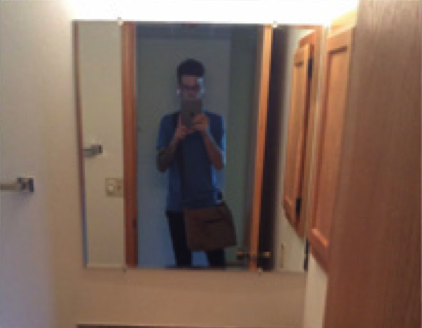The Tinder experiment

February 15, 2015
Tinder is trying really hard to be more than just a dating app that categorizes people based solely on looks.
But using it feels like playing God, swiping through photo after photo, making split-second decisions based on a predetermined amount of user uploaded photos.
It has a chat function where users can send photos, like any IM service, and even has “moments,” like Snapchat’s “stories,” where users see a photo or video on their feed as people submit them.
Aside from that, Tinder is, well, a dating app.
All it takes is a swipe right to get the love going. When both users swipe right a match is made. If either swipes left, no match.
The Observer decided to put Tinder to the test with the ultimate battle of the sexes.
Two editors, male and female, downloaded the app on Feb. 2. For the next six days they swiped right on every profile they saw.
Both apps were set to seek matches ages 18-30, within a 20-mile radius. Both uploaded five photos and had blank bios.
Let’s cut to the chase: Tinder is weird. It’s like channel surfing, but instead of channels, you’re surfing people. There are humans on the other end of those pictures, but the app is set up in such a way that it dehumanizes everything and assigns a “like” or “dislike.” Also, if I were single, this would be pretty damn awesome.
But I’m not. Sorry, ladies.
In the first hour I had Tinder, I swiped right, or liked, only 22 profiles, because that’s all I had to swipe through. Luckily for me, my ego stayed intact and I was matched with two other people, whom I’ll call Jennifer and Alice (even though you know they aren’t).
Later that evening, Jennifer and Alice were joined by seven other lovely ladies, including my colleague. Yes, nothing would stop us from swiping right, not even each other.
I had swiped right on 143 profiles at this point, making my swipe to match percentage a paltry 15 percent, give or take. Mom is going to be so proud.
Some days, I’d forget to swipe, and I’d be met with groups of potential suitors (suitettes?). Unlike Rachel, though, I was never bombarded with packs of girls, looking to show me a good time.
I did, however, receive a few messages. This I did not expect. I was of the mindset that I would get a few matches here and there and maybe a message or two. My life up until this point had always been me (a man, I might add) making the first move and fishing for that first conversation.
But alas, I was pleasantly surprised (and called out on my prejudice). Emily, my third match, messaged me with, “Hey :)” moments after I had swiped her. Cool.
Jennifer, my 13th match, messaged me a resounding “well hi there.” Tiffany, my 14th, “oh hey.”
I was starting to think I’d never be the recipient of an awesome, well-thought-out introduction. It seemed my lady friends only had the courage to muster up a few words, barely putting themselves out there for connection.
Kristina, my 34th match, did say, “You are very attractive :).” I’m smitten.
One particular lady, let’s call her Maggie, commented on my then profile bio of “I like turtles” with a message of her own.
“Turtles are pretty great, did you know that red ear sliders are actually really fast?”
Overall, I received eight messages from 37 matches; nine if you count two messages from the same girl. (I’m sorry, Tabitha, I wish I could respond but I have rules to follow!)
I also swiped right 213 times, with 36 matches. I guess that means I have a 17 percent likeability rating. What keeps me up at night, though, is this: “How many matches would I have if I only swiped right on profiles I would normally be interested in?” Online dating is weird.
I actually don’t have anything profound to say about this experience. Did it put a strain on my relationship? Kind of. Did I have fun doing it? Not really. Did I learn more about the perversion of the human soul? Definitely.
Would I do it again? Absolutely.

